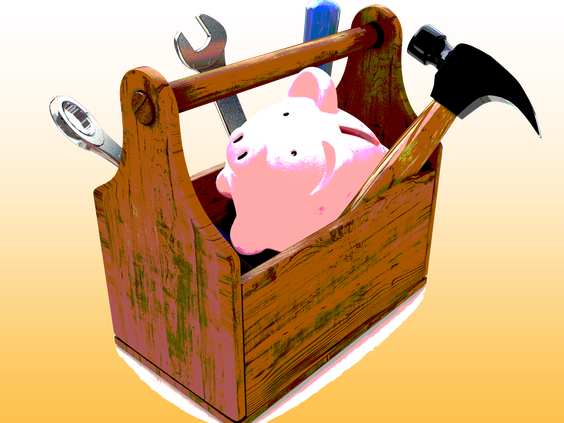A woman we’ll call Brenda, 56, lives in Alberta with two children aged 22 and 14. She brings home $5,250 per month and adds $4,000 monthly child support that will drop to $500 per month in two years. She would like to retire in a few years, but timing the end of her career is problematic. She needs to balance her expected expenses with expected income. She will be able to depend on a teacher’s pension which, with a $20,000 buy-back contribution, can provide $44,517 per year starting in two years at her age 58. Her goal — $5,000 per month after tax when retired.
Brenda still has $1,700 per month to pay on her $26,040 outstanding mortgage. It will be paid in full in 15 months. Her private savings — $273,000 in RRSPs and $10,400 in TFSAs will boost her spending capacity but will clearly not support her present budget of $9,250 per month. Adjustments have to be made. Some, like a lower food bill when her children move out, will happen in due course. Others, such as deciding which accounts to tap for future income, need analysis.
Family Finance asked Eliott Einarson, a financial planner who heads the Winnipeg office of Ottawa-based Exponent Investment Management Inc., to work with Brenda. There are problems, he explains. Much of her TFSA portfolio was used for a kitchen reno, leaving a balance of $10,400. She can make up for the reduction by working part time as a substitute teacher for $30,000 per year. In her 30 per cent average tax bracket, Brenda has to earn $3,000 or take that much out of RRSPs in order to be able to spend $2,000.
Retirement strategies
Brenda’s goal is to live in her home for as long as possible. Her present spending, $9,200 per month, will shrink when she ends her $1,700 monthly mortgage payment, $3,000 for RRSP and TFSA savings and $1,000 gifts to the kids. That’s a $5,700 reduction in present allocations, leaving $3,550 per month of core expenses in retirement.
To cover those expenses, Brenda can rely on $273,000 in RRSPs and $10,400 in her TFSA. Her only debt is the mortgage on her $500,000 residence. Her net worth is a respectable $890,260.
If Brenda retires in two years, she could buy back a previous year when she was working part time. She would gain $44,517 annual gross income for a cost of $20,000.
Her RRSP, with a $273,000 balance to which she can add $18,000 in 2022 and then $6,000 for one more year, would grow to $314,902 in two years and then support payouts of $13,790 for the following 37 years to her age 95. Those two sources add up to annual pre-tax income of $58,307. After 19 per cent average income tax, she could have net income of $3,935 per month. That would cover her $3,550 retirement core expense budget but there would be nothing left for a new or newer car from time to time or other discretionary expenses.
If Brenda waits for five years to age 61 to retire when her younger child graduates from high school, her pension with the $20,000 buy back would rise to $50,493 annual income before tax. Her RRSP with two more years growth would rise to a balance of $314,900 with $6,000 annual contributions and a three-per-cent return after inflation. That sum would then support $16,687 taxable RRSP income to her age 95. She would add $8,900 annual CPP (that’s $742 per month) at age 61 for total income of $76,080. After 20 per cent average tax, she would have $5,075 per month for living costs. The $8,900 CPP is a significant component of income, but it reflects a reduction of 7.2 per cent per year for each year before 65 that it starts. Four years adds up to a 28.8 per cent annual cut forever in CPP payouts. Brenda could avoid that loss by reducing spending by $742 per month for five years. Reducing travel and entertainment, currently $700 per month, by $400 and taking $300 out of monthly subsidies to her children would do it. The choice comes down to pleasure now or pleasure later.
Income projections
Brenda’s TFSA, depleted for home repairs a few years ago, can rise from its present balance of $10,400 with $18,000 and $30,000 contributions this year and next, respectively, while she still receives child support payments. Those additions would lift the TFSA balance to $61,030 in two years when she is 58. Then, if she adds $6,000 per year over the next three years to her age 61, when she plans to retire, the TFSA will have $85,790. That capital would support payouts of $4,375 per year to her age 90. Then at 65, she can expect Old Age Security to begin with initial payouts of $7,707 per year.
With these income components, at her retirement at age 61, Brenda would have $50,493 pension, $16,687 RRSP income, $4,375 TFSA payouts and $8,900 CPP payments. That’s total pre-tax income of $80,455 per year. With TFSA cash flow not taxed and the balance taxed at an average rate of 22 per cent, she would have $5,300 per month.
Finally, at 65, she would add Old Age Security at $7,707 for total, pre-tax income of $88,162 per year. With TFSA cash flow eliminated, her income would be $83,787. After 22 per cent average tax and restoration of TFSA cash flow, she would have $5,800 per month to spend.
Brenda could raise income by moving investments from their present home in mutual funds to exchange traded funds. Her investment dealer has put her into a 60 per cent equity, 40 per cent bond allocation, which, these days, guarantees low and declining fixed-income returns. She might save one or two per cent per year in fees using ETFs that replicate her high fee mutual funds. On a present invested base of $283,400, even one per cent saved, $2,834 per year, would cover travel or other spending she might forego.
She could seek independent investment advice not attached to product sales, Einarson notes. The potential rewards could enhance her desired retirement.
3 Retirement Stars***out of 5






